Raising Water Consciousness through
World’s Biggest Photo Exhibition and
Largest collection of Photo Stories on Water
Photo Stories | Water and Environment
Pollution of Water Sources Differently
Nandita Singh and Om Prakash Singh
11 July, 2016
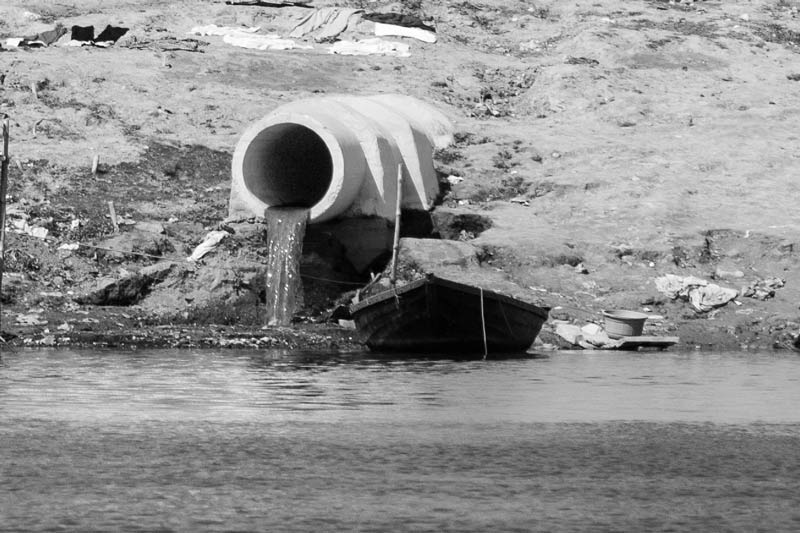
Water pollution is a major challenge in India with rivers, lakes, tanks, ponds and other water sources getting increasingly polluted in different ways. The largest cause is dumping of untreated sewage into water bodies. According to figures from Central Pollution Control Board (CPCB) in 2015, 21,031 million liters of raw sewage is discharged directly each day due to either insufficient treatment capacity or underutilization of existing capacity. In addition, many urban areas that are unconnected to the sewerage system resort to privately releasing untreated sewage into local water sources. At many places solid waste is also directly dumped into rivers, lakes and even wells. Further, the growth of water tourism adds to the pollution load in a number of ways including discharge of untreated wastewater and solid waste directly into water bodies. All this leads to high levels of organic and bacterial contamination in water. Industrial effluents are another major cause of pollution. Numerous industries such as mining, tannery, chemical plants, sugar mills, paper mills, textile industry and distilleries prosper along their banks and contribute to severe chemical pollution by discharging untreated toxic wastewater. Agriculture, animal husbandry and fish farming all generate wastes which ultimately end up polluting water sources. In addition, animal carcasses are dumped into water bodies. Another source of pollution is the hundreds and thousands of idols that are immersed in rivers, lakes and other water bodies after religious festivals which are observed widely in urban and rural areas across the country. Immersion of idols releases dangerous chemicals in the receiving water bodies. Since rivers and surface water bodies are generally regarded as holy in India, on religious occasions thousands of people take a dip, also leaving behind worship materials, polythene bags and floral offerings in the water. Ashes from pyres as well as unburned corpses are also disposed into rivers adding to the pollution. Wherever surface water sources are polluted, the possibility of groundwater pollution also increases. Polluted water sources have serious implications for consumptive use as well as ecological sustainability, in turn thwarting enjoyment of the human rights in various ways. Considering these implications, it is quintessential that the problem of water pollution be addressed urgently. This photo story presents glimpses of how India's water sources are being polluted in different ways. The title photo depicts untreated municipal sewage discharged into river Ganga at Varanasi, Uttar Pradesh.
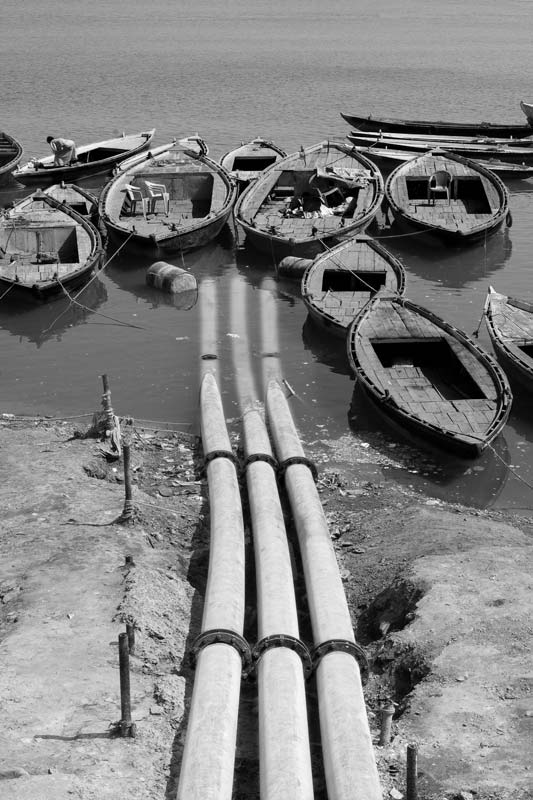
Pipes carrying untreated sewage into river Ganga at Varanasi, Uttar Pradesh
The gap between generation and treatment of domestic sewage in India is large. Only 24% population in the country is provided with sewage facility, that too only in Class I cities while class II cities do not have sewage facility at all. In the 5 states in the Ganga river basin, namely, Uttar Pradesh, Uttarakhand, Bihar, Jharkhand and West Bengal, the sewage generation is 7301 million liters per day (mld), but the total treatment capacity is only 3314 mld. Even the existing capacity remains underutilized since many the existing sewage treatment plants are poorly maintained or lack reliable electricity supply. According to figures released by CPCB in 2015, as many as 302 river stretches in the country are polluted. The CPCB has identified discharge of untreated municipal sewage as the major source of river pollution, besides the inadequacy of water in them so that dilution of pollutants in the receiving water bodies is not possible.
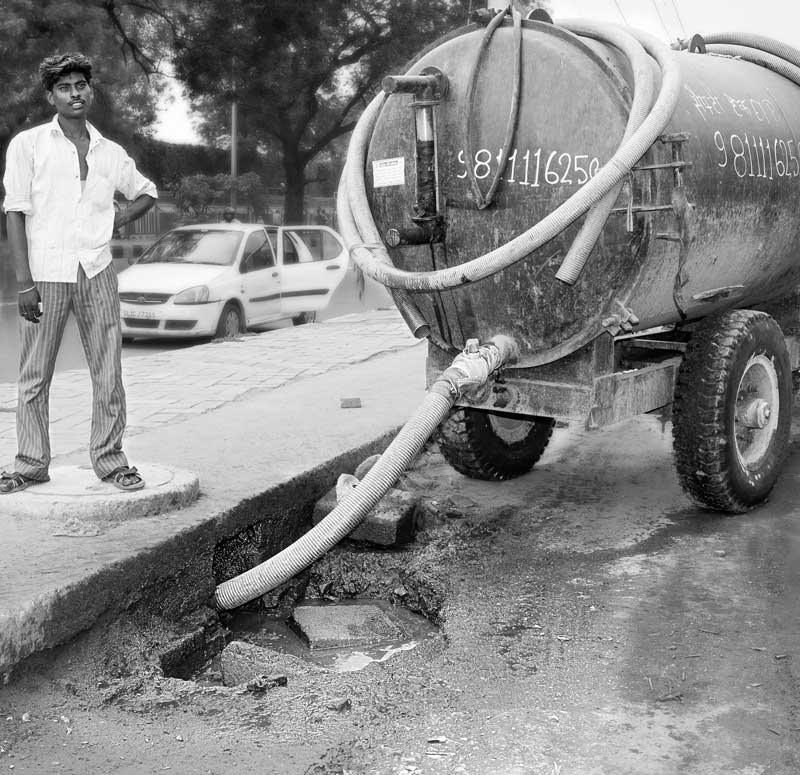
A sewage tanker emptying into a storm water drain in South-East district, National Capital Territory of Delhi
Only about 55% homes in Delhi are linked to a proper sewerage system and rest of the 45% of domestic wastewater goes into surface water bodies directly. This untreated wastewater is discharged into storm water drains and open sewage drains privately that finally find way into the Yamuna river, raising the pollution level.
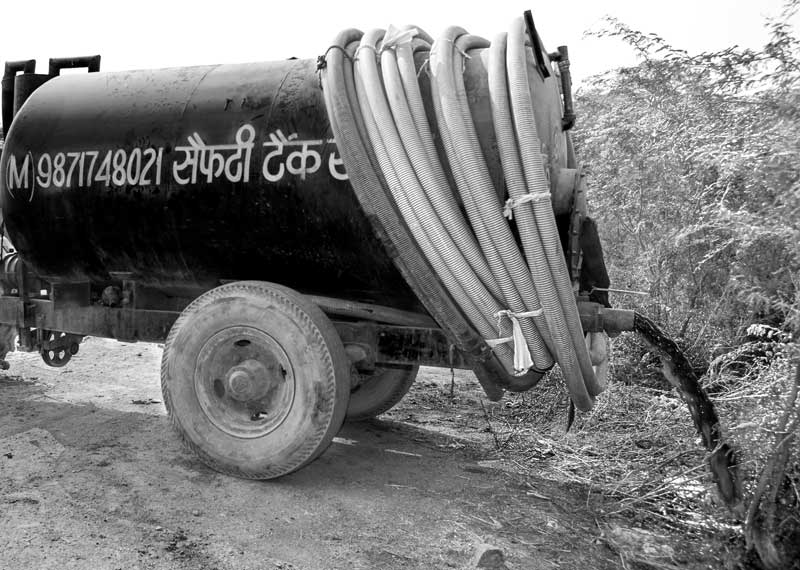
A sewage tanker emptying into Najafgarh Drain in South-West district, National Capital Territory of Delhi
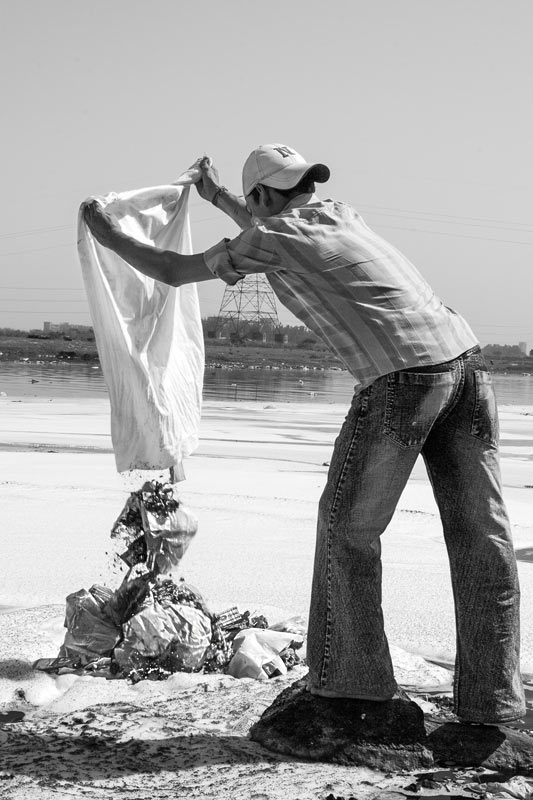
Solid waste being disposed into river Yamuna, National Capital Territory of Delhi
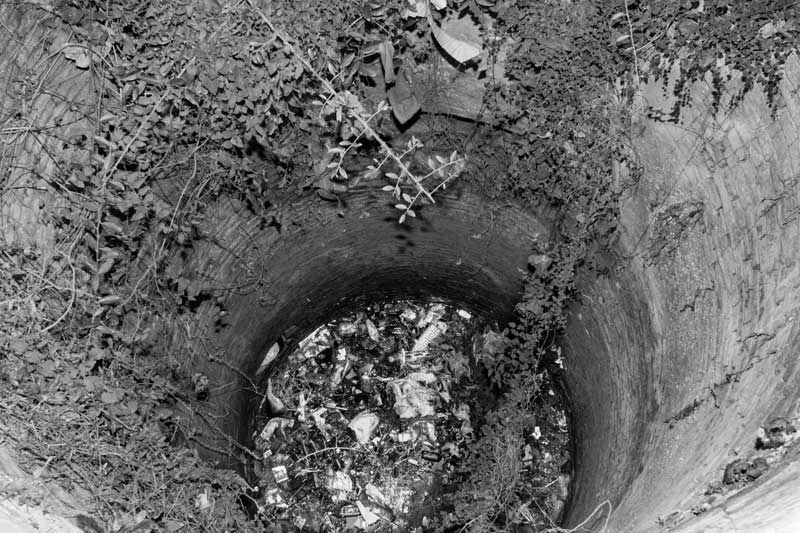
Household waste including remains from religious observances being dumped into a well once used as a drinking water source in Bhojpur district, Bihar
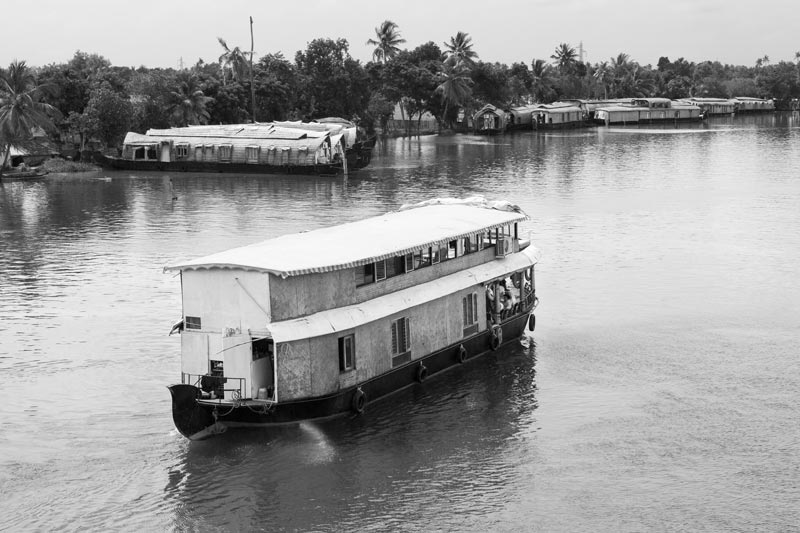
A houseboat in Pamba river, Alappuzha district, Kerala that drains into Vembanad Lake
India is a land of pulsating coastlines, golden beaches and swift rivers and thus offers an exquisite opportunity of water-based tourism. According to government sources, more than 1000 water tourism sites exist in the country. However, this implies a significant concern for water quality. Construction of hotels, recreation and other facilities often leads to increased sewage pollution. Wastewater has polluted lakes, rivers and seas surrounding tourist attractions, depriving the access of local populations to clean drinking water and damaging the flora and fauna. in coastal areas, sewage runoff can cause serious damage to coral reefs and changes in salinity and siltation can have wide-ranging impacts on coastal environments. Examples of such pollution can be seen in states like Jammu and Kashmir, Goa, Kerala, Maharashtra, Tamil Nadu and Rajasthan.
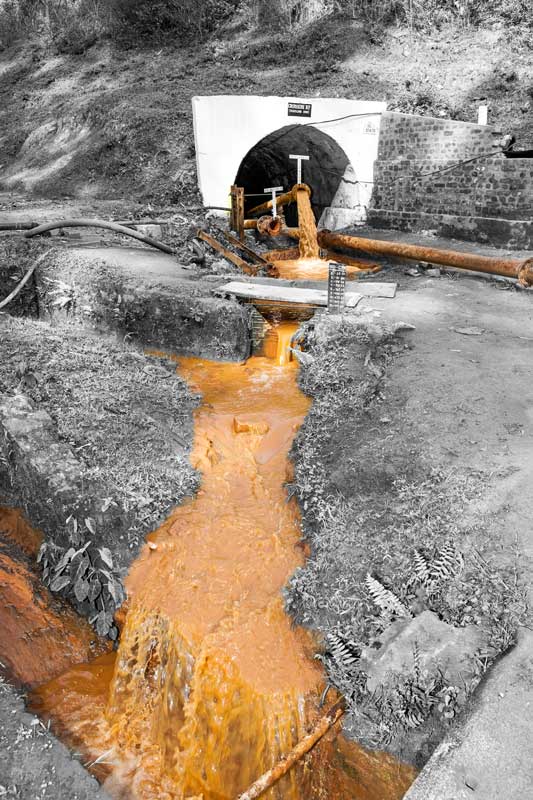
Polluted mine water being discharged into Tipong river from Tipong Colliery of Makum Coalfield, Tinsukhia district, Assam
Wastewater from the mining industry is an important source of water pollution. Acid Mine Drainage (AMD) is the acidic metal rich water formed by the reaction between the water and rock containing sulfur-bearing minerals. It especially occurs in coal mines and metal mines and can make water unfit for human and animal consumption or even for crop irrigation. This water is therefore treated to reduce the acidity, resulting in formation of highly alkaline sludge slurry which continues to be toxic, but may be directly released into natural water bodies, causing pollution.
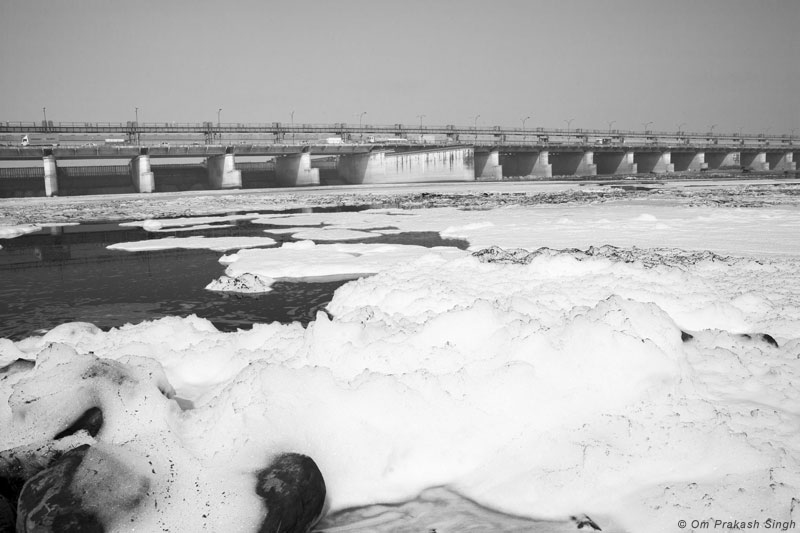
Untreated industrial wastewater and domestic sewage polluting River Yamuna in National Capital Territory of Delhi
Besides untreated domestic sewage, untreated industrial wastewater find their way into rivers and other water bodies from units located near their banks. This aggravates the pollution in these water bodies. River Yamuna is the longest tributary of the holy Ganga River but for decades, toxic white foam has characterized this river in several sections of its stretch in Delhi. Caused mainly by high levels of ammonia and phosphates coming from detergents and industrial cleaning agents, the foam is a sign of the exceptionally high level of pollution in this river. Short term exposure to the toxic foam can result in respiratory and skin problems, and its ingestion may cause gastrointestinal problems. Since it may also contain heavy metals from industrial pollutants, long term exposure can cause neurological issues and hormonal imbalances. Though Delhi constitutes only about 2% of Yamuna's catchment, it contributes to about 80% pollution of the river, to which industrial effluents from 22 large units in Haryana, 42 in Delhi and 17 in Uttar Pradesh and numerous smaller units are recognized as significant contributors. There are also problems with efficient functioning of the city's sewage treatment plants, besides their inadequate capacities. According to the latest CPCB report, the river falls under the category 'E', which makes it fit only for recreation and industrial cooling, completely ruling out the possibility for underwater life and domestic supply.
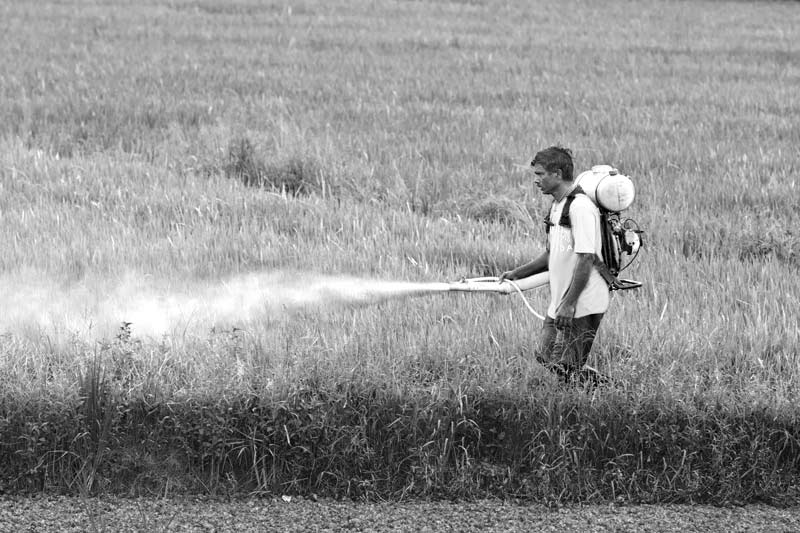
Pesticide being sprayed in paddy fields near Vembanad Lake in Alappuzha district, Kerala
Agricultural runoff is yet another source of pollution because such water often contains pesticides and fertilizers or may be salinized. It often contains chemicals like mercury, beta-endosulphan, heptachlor as well as ammonia, phosphate, chloride, chromium, arsenic and chlorpyrifos.
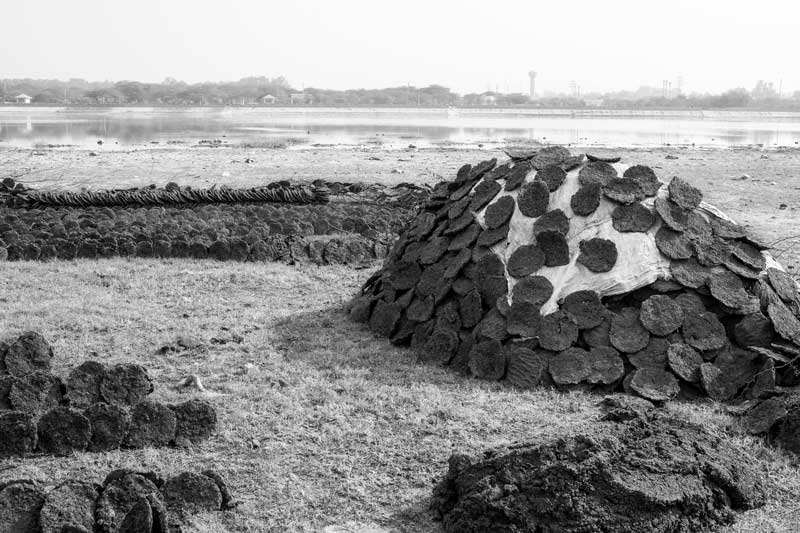
Cow dung cakes being dried in the bed of Bhalswa Lake in North-West district, National Capital Territory of Delhi
Animal waste adds to pollution, bringing excess nitrogen, phosphorous, antibiotics and hormones, many of which cannot be even filtered out of water by any means.
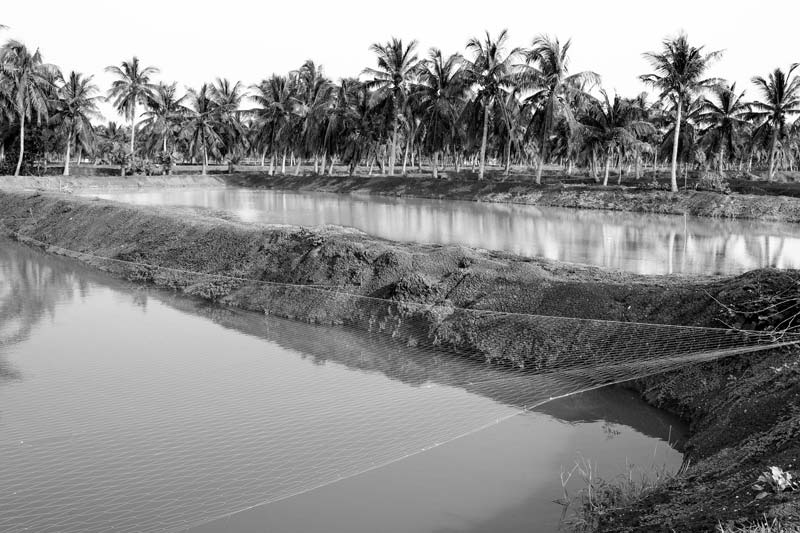
A fish farm in the Kolleru Lake bed in West Godavari district, Andhra Pradesh
Fish farming is an important source of livelihood and high quality protein food. However, fish farming thrives on the use of massive amounts of antibiotics, hormones, and pesticides which are required to keep disease at bay. Further, uneaten fish feed, fish waste and any chemicals used in the fish farm operations remain in the ponds. The risk of contamination from these sources to the surrounding water and groundwater underneath is generally high.
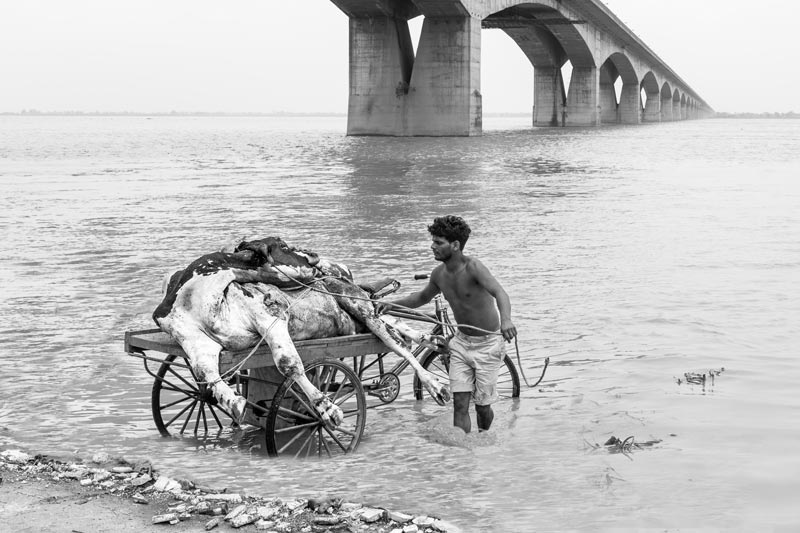
An animal carcass being dumped into river Ganga at Patna, Bihar
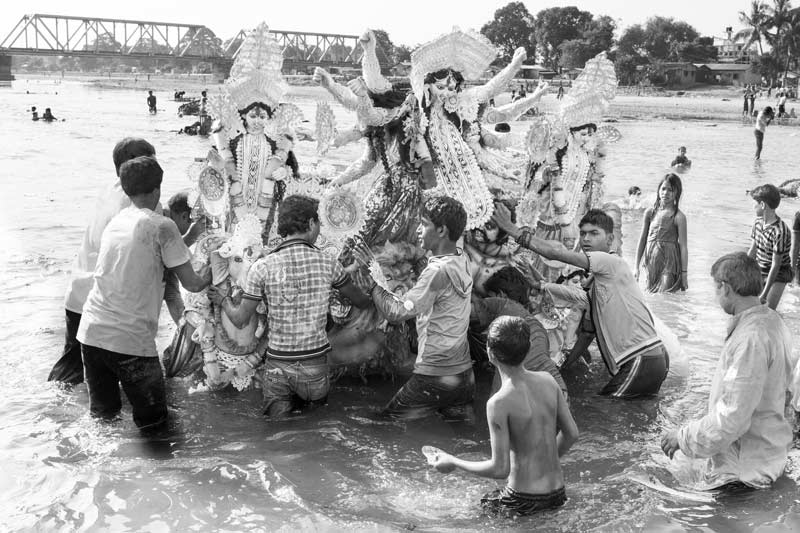
Idol immersion after Durga Puja in river Mahananda at Siliguri, district Darjeeling, West Bengal
Ganesh Chaturthi, Durga Puja, Kali Puja, Saraswati Puja and Vishwakarma Puja are some of the important religious occasions at the end of which idols are immersed in water. Traditionally, the idols were made of mud and painted with natural colors. But now many are made using Plaster of Paris (PoP) and coated with harmful paints containing heavy metals like manganese, lead, mercury and chromium, besides containing varnish and grease. Idols made of PoP do not dissolve easily in water, also reducing the oxygen level in the water, killing fish and other aquatic organisms. The various chemicals are released from the idols into the rivers and other receiving water bodies, degrading the water quality considerably.
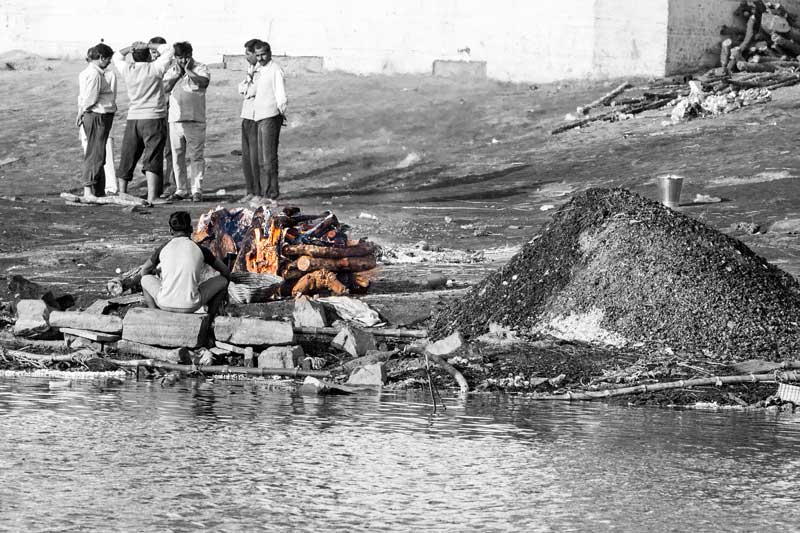
A dead body being cremated on the banks of river Ganga at Varanasi, Uttar Pradesh
The Ganga river which is revered by Hindus as the gateway to heaven, receives a high number of dead bodies primarily because of the widely held belief that dying along the banks of the river in Varanasi will release one from the cycle of rebirth. For those who can afford, ceremonious cremation of the dead is possible after which ashes are immersed into the water. 25,000 to 30,000 bodies are cremated in a year on various Varanasi Ghats; at an average of 80 per day. For the vast majority of the poor however, the corpse is floated into the river directly, exposed to the elements. Further, many Hindus believe that bodies of those who die from certain diseases (such as asthma, tuberculosis, leprosy, snake bite and poisoning) and those of newborn babies, young boys, unmarried persons and holy men should not be burned but directly consigned to the river. The human ashes and unburnt corpses add much to the pollution load of Ganga river, as also to that in many other rivers in the country.
Pollution of water sources makes water unfit for not only drinking but also for bathing and other domestic uses. Polluted water may be unfit even for crop irrigation, and also threaten ecological sustainability. Further, if the water is polluted upstream, those living downstream are bound to suffer. Pollution of water sources have serious implications for enjoyment of the human right to water as well as other connected rights such as health, education, food, livelihood and a safe, clean, healthy and sustainable environment. In order to secure universal enjoyment of these human rights, it is necessary that the problem of water pollution be addressed urgently and an integrated approach be adopted for restoring and improving the water quality of the different sources.